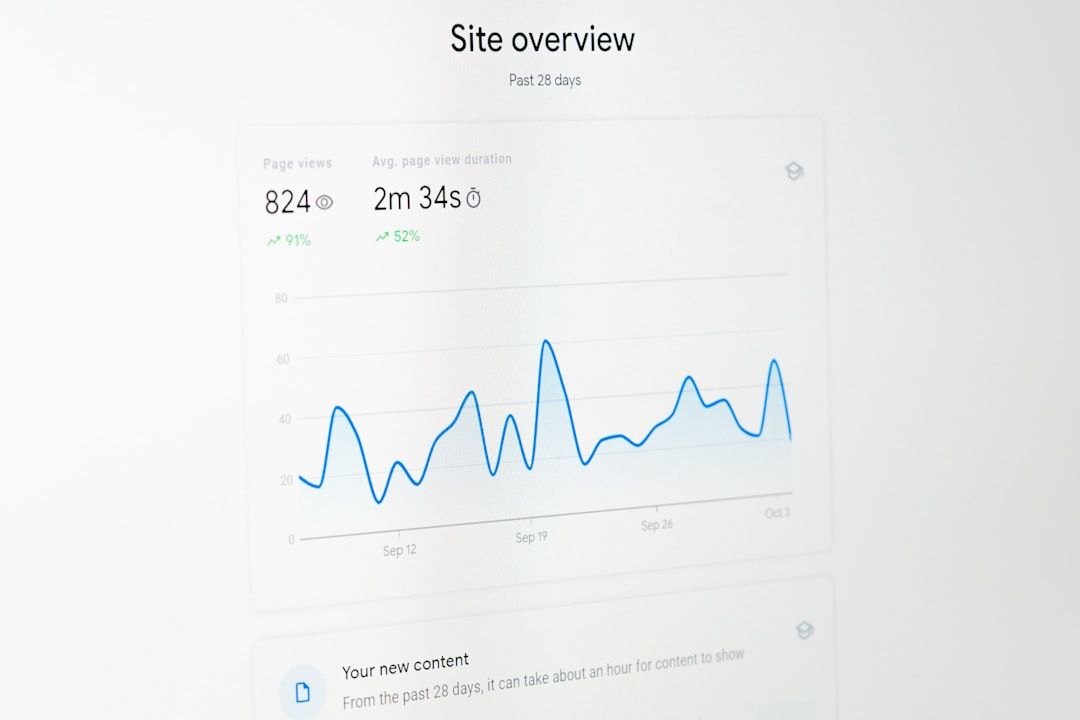In the rapidly evolving world of digital content, the way users access and consume information is undergoing a fundamental transformation. With the rise of artificial intelligence and the integration of summarization tools across search engines and news platforms, publishers are beginning to see a shift in how page views and engagement levels are impacted—particularly the Click-Through Rate (CTR). As AI summaries become increasingly sophisticated, there’s a growing concern: are users still clicking through to original sources, or are summaries enough?
The Rise of AI-generated Summaries
AI-driven summaries offer immediate information, saving users time and effort. Tools like Google’s Search Generative Experience (SGE), Microsoft’s Copilot, and various browser extensions can now generate concise, meaningful summaries of web content in microseconds. For users, this is a blessing—they can get the key points without clicking multiple links. However, for content creators and website owners, this technological advancement presents a unique challenge.
When users rely on AI-generated snippets to get their answers, they may never visit the original content. This choice significantly impacts CTR, which has traditionally been a vital metric for measuring the effectiveness and reach of digital marketing campaigns, SEO strategies, and user engagement.

Why CTR Still Matters
Click-Through Rate measures how often people click on a link, ad, or search result after seeing it. Despite new user behaviors fueled by AI, CTR remains crucial for several reasons:
- Revenue Generation: For content-based websites, CTR directly impacts ad revenue. Fewer clicks mean fewer impressions and lower monetization opportunities.
- SEO Signals: Search engines still interpret higher CTR as a sign of relevant and engaging content, potentially influencing rankings.
- User Engagement: A high CTR generally signals user interest. If AI summaries spoil the need to click through, engagement plummets.
CTR is not just a number—it’s a representation of audience interest and trust. With AI taking over summarization tasks, measuring the true value of content becomes more abstract and complicated.
How AI Summaries Influence User Behavior
Recent studies suggest users are becoming more accustomed to scanning summaries rather than delving into complete articles. These tech-savvy users rely on condensed information to make quick decisions or stay updated. This shift causes three key changes in user behavior:
- Less Time on Site: Fewer clicks mean shorter sessions and less time spent navigating content.
- More Bounced Traffic: When users do click, it’s often for confirmation rather than exploration, leading to higher bounce rates.
- Greater Dependency on Context: With AI cutting down information into bite-sized portions, context gets lost, leading to misinterpretations or oversimplifications.
These behavioral adaptations mean that AI summaries aren’t simply disruptors—they become gatekeepers between websites and their potential audiences.
Strategies to Improve CTR in an AI-Dominated World
While the threat of AI summaries eating into CTR is real, it isn’t insurmountable. Content creators and marketers can employ several tactics to maintain or even increase their engagement rates:
1. Optimize for Featured Snippets
AI tools often pull data from featured snippets and top-ranking pages. By structuring content with concise, valuable summaries (like bullet points or direct answers), creators can ensure their content remains the source AI tools favor.
2. Enhance Meta Titles and Descriptions
Your meta title and description act as your first point of contact. Make them compelling, actionable, and curiosity-inducing. Use emotional triggers and questions to incite clicks beyond what AI summaries offer.
3. Use Strong CTAs Within Content
Encourage user interaction by strategically placing Calls To Action (CTAs) throughout your content. Even if users are initially satisfied with a summary, they might be intrigued enough to explore further if prompted effectively.

4. Diversify Content Formats
Video, interactive tools, and infographics are less likely to be fully captured by AI summaries. Incorporating a variety of formats not only retains engagement but also compels users to visit your site for the full experience.
5. Educate Your Audience
Let users know what they’re missing in those AI-generated summaries. Incorporate disclaimers or enticements such as, “This is just the surface. Click to read the full story,” especially on social or preview platforms.
Long-Term Effects on the Digital Ecosystem
As publishers adapt, the digital ecosystem will transform further. Search engines could start rewarding sites not only for content quality but also for their “summarizability.” Additionally, analytics tools may evolve to accommodate new metrics like “summary engagement” or “AI visibility score.”
In the long term, we might witness the emergence of hybrid content strategies where human and AI collaboration leads to content optimized both for users and machines. This dual optimization will require careful planning, thoughtful design, and in-depth understanding of how AI selects and displays content snippets.
Conclusion
CTR in the age of AI summaries is not a dying metric but an evolving one. Marketers, SEOs, and content creators must recalibrate how they measure success and engagement. It’s no longer just about getting clicks; it’s about offering value that outshines the automated summary. By adapting strategies and embracing this change, digital publishers can continue to thrive—even in a world increasingly reliant on artificial intelligence.
Frequently Asked Questions (FAQ)
-
Q: What is CTR?
A: Click-Through Rate (CTR) is the percentage of users who click on a specific link compared to the total number of users who viewed the content. -
Q: How does AI impact CTR?
A: AI summarization tools provide users with brief content previews, reducing the need to click through to the original content, thereby lowering CTR. -
Q: Can CTR still be improved despite AI summaries?
A: Yes. Through optimized metadata, diversified content formats, strong calls to action, and structured content, publishers can encourage more clicks. -
Q: Are AI tools bad for content creators?
A: Not necessarily. AI tools can help distribute content more effectively. The key is to adapt and ensure your content remains the authoritative source. -
Q: What types of content are least affected by AI summaries?
A: Interactive tools, video, in-depth research, and multimedia-rich formats are less likely to be fully summarized and can drive users to click through.

